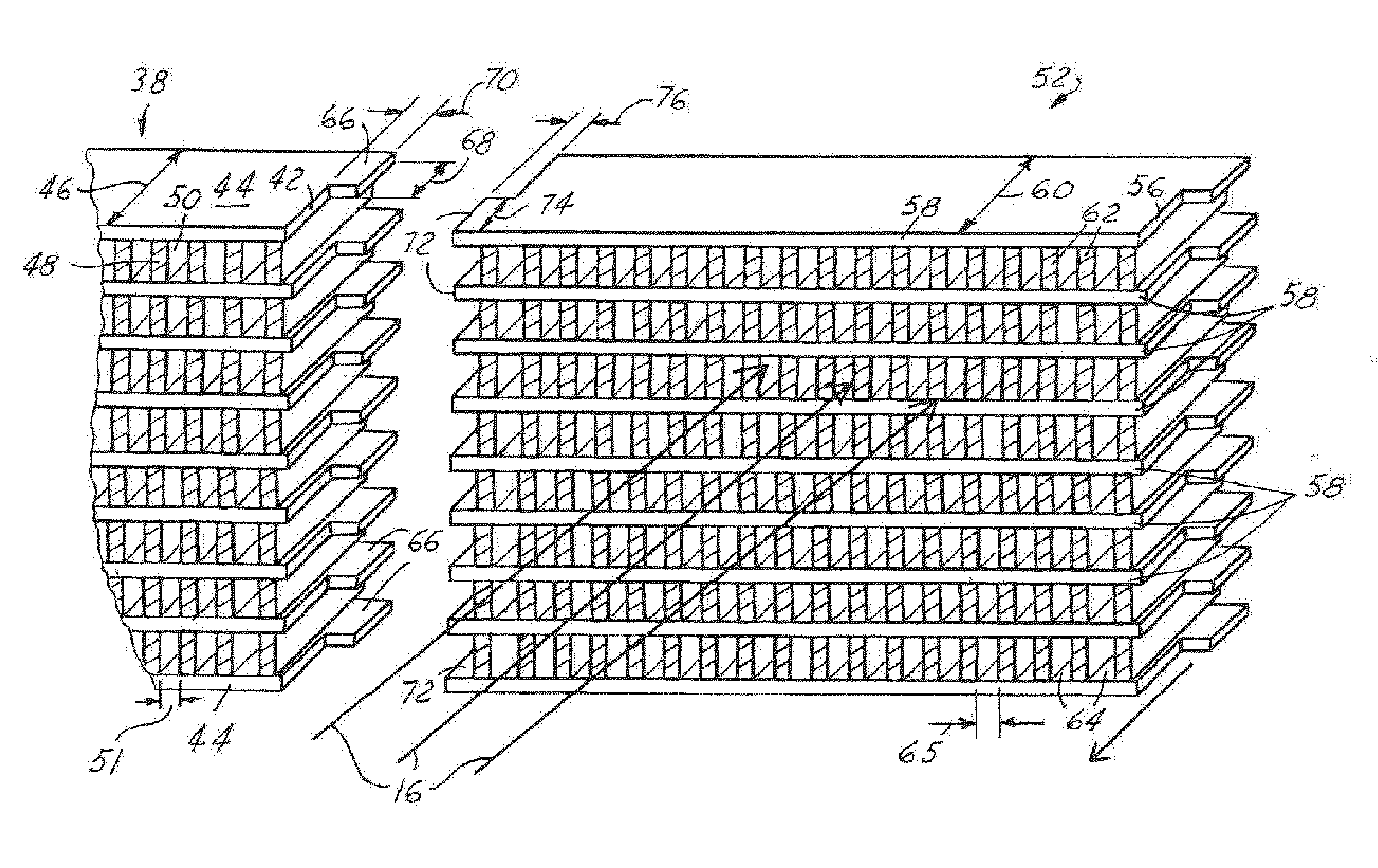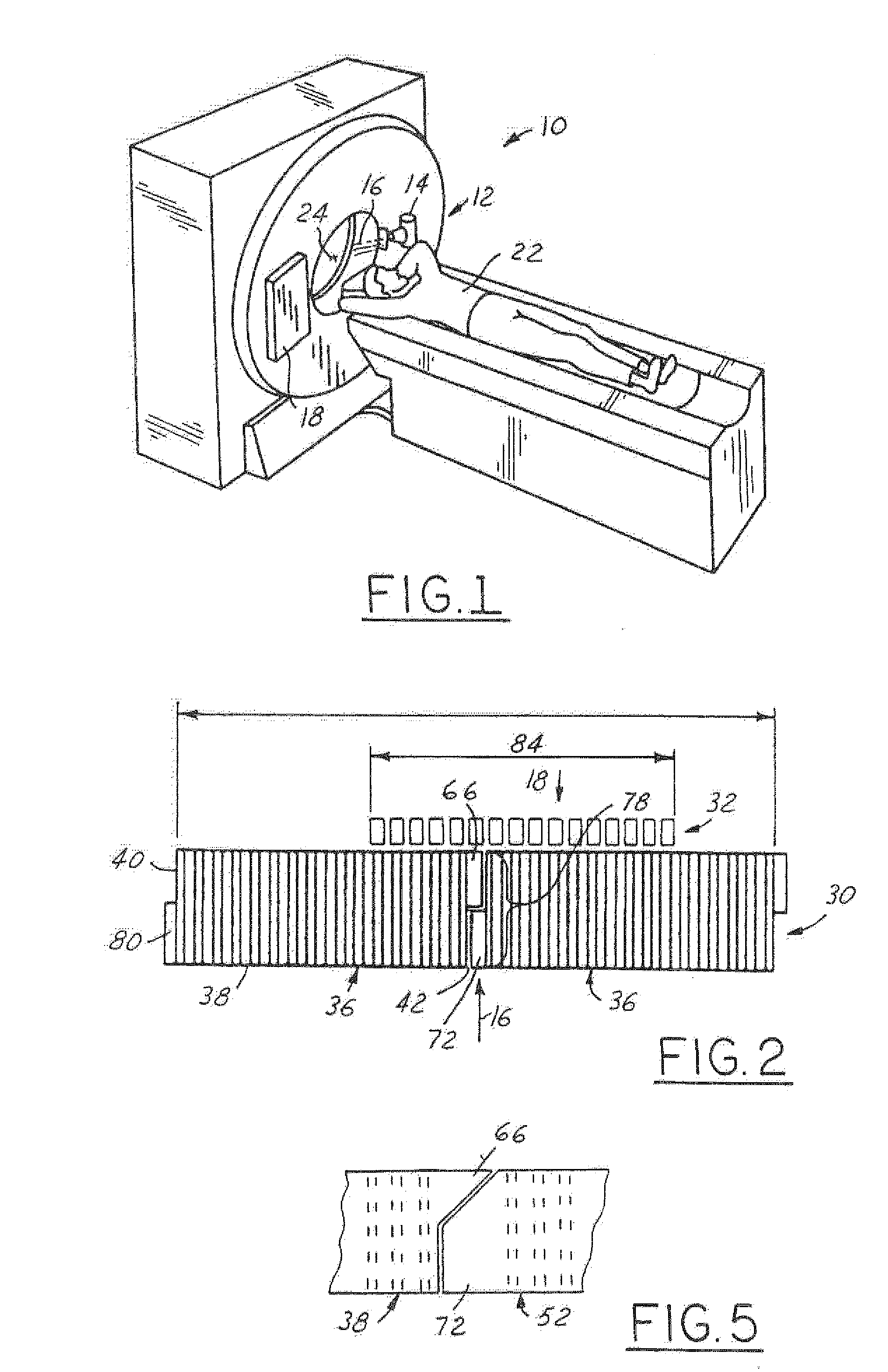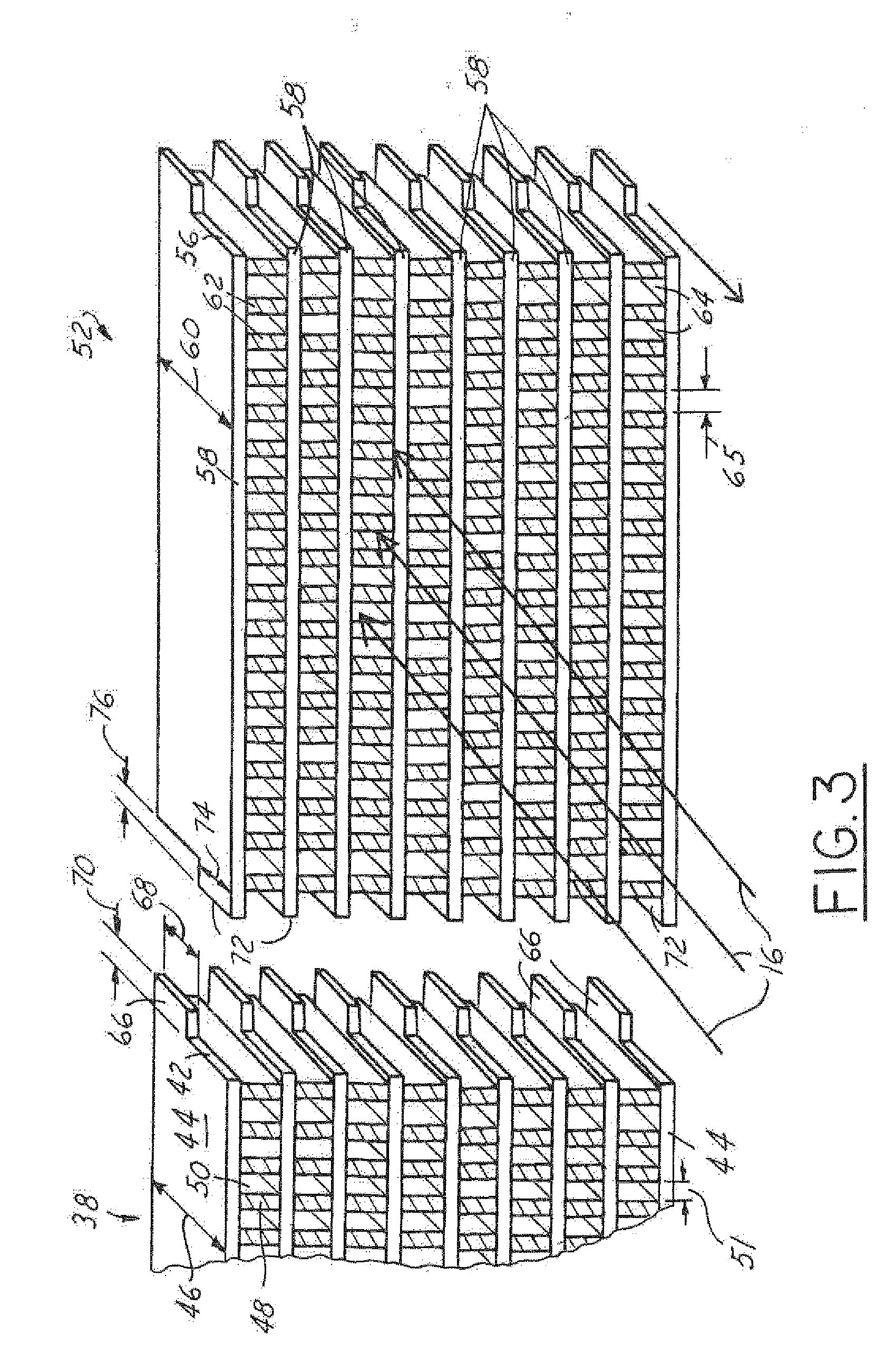Segmented collimator assembly
- Summary
- Abstract
- Description
- Claims
- Application Information
AI Technical Summary
Problems solved by technology
Method used
Image
Examples
Embodiment Construction
[0016] Referring now to FIG. 1, which is an illustration of a computed tomography (CT) imaging system 10 for use with the detector assembly 18 of the present invention. Although a particular CT imaging system 10 has been illustrated, it should be understood that the detector assembly 18 of the present invention can be utilized in a wide variety of imaging systems. The CT imaging system 10 includes a scanner assembly 12 illustrated as a gantry assembly. The scanner assembly 12 includes an x-ray source 14 for projecting a beam of x-rays 16 toward a detector assembly 18 positioned opposite the x-ray source 14. The detector assembly 18 senses the projected x-rays 16 that pass through an object, such as a medical patient 22. The detector assembly 18 produces an electrical signal that represents the intensity of an impinging x-ray beam and hence the attenuation of the beam 16 as it passes through the object of patient 22. Commonly, during a scan to acquire x-ray projection data, the scann...
PUM
 Login to View More
Login to View More Abstract
Description
Claims
Application Information
 Login to View More
Login to View More - R&D
- Intellectual Property
- Life Sciences
- Materials
- Tech Scout
- Unparalleled Data Quality
- Higher Quality Content
- 60% Fewer Hallucinations
Browse by: Latest US Patents, China's latest patents, Technical Efficacy Thesaurus, Application Domain, Technology Topic, Popular Technical Reports.
© 2025 PatSnap. All rights reserved.Legal|Privacy policy|Modern Slavery Act Transparency Statement|Sitemap|About US| Contact US: help@patsnap.com



